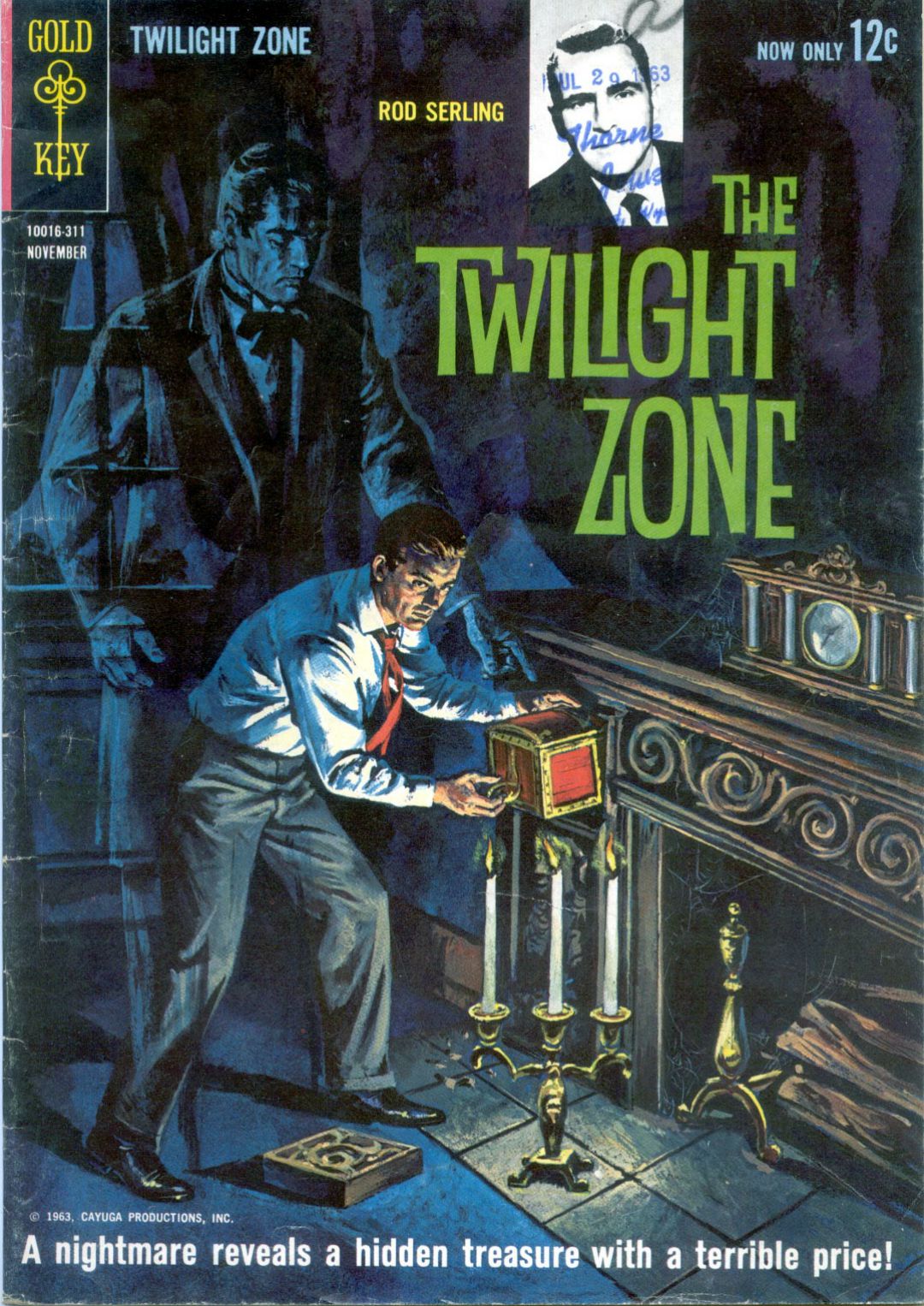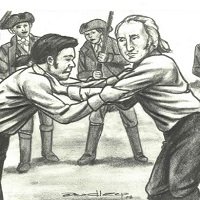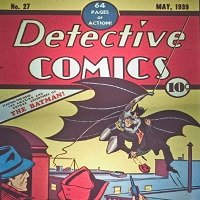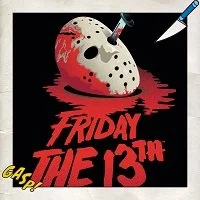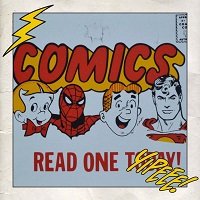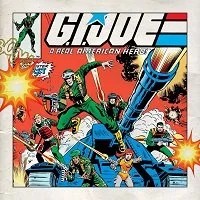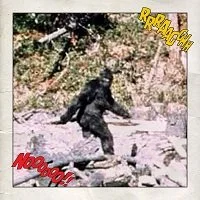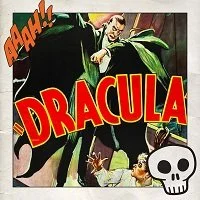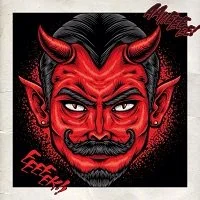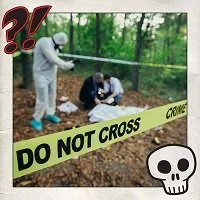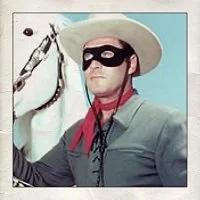The Twilight Zone #5 and #6 (Gold Key Comics) Comic Book Review
By Joseph Perry (@JosephWPerryJWP; tastethemilkofchocula.blogspot.com)
The first time I can remember being scared at something on television as a young child was by the boxing robot Battling Maxo on the “Steel” episode of The Twilight Zone. Considering the stronger nightmare images that this classic series brought to homes around the world, this seems like a silly thing to be bothered by. By the time this incident occurred, though, I was already a fan of Rod Serling’s show, and would continue to watch, fascinated, no matter how much Maxo freaked me out the first time I saw him. I would soon discover, right around five or six years of age, Gold Key Comics’ comic book version of the series.
In this article, I will take a look at issues number five (November, 1963) and six (February, 1964) of Gold Key Comics’ The Twilight Zone. The series had a successful 91-issue run from 1962–1979 — Gold Key picked up the title from Dell Comics, which had previously published four issues beginning in 1961 — and featured work from many talents in the field, including Len Wein (Swamp Thing and some X-Men characters including Wolverine), Alex Toth (the animated characters Space Ghost and Birdman), Walt Simonson (Star Slammers), and Leo Dorfman (DC Comics’ Ghosts). Working on this title was the first industry job for Frank Miller (Batman: The Dark Knight and Sin City).
In a When It Was Cool review I did about issue number five of Dell Comics’ The Outer Limits (http://www.whenitwascool.com/outer-limits-issue-5-comic-book-review), I mentioned that “For as innovative as its initial television run from 1963–1965 was, the groundbreaking science-fiction television series The Outer Limits suffered quite a bit in its Dell Comics adaptations” and “just know going into it that it isn’t as cerebral as the TV series.” In the case of Gold Key’s The Twilight Zone issues five and six, the quality of the (sadly uncredited) writing is much higher than that of Dell’s The Outer Limits. As a matter of fact, some stories would have made nice adaptation material for The Twilight Zone television series. To be sure, the writing is certainly not up to par with that of such The Twilight Zone scribes as Charles Beaumont, Richard Matheson, or Serling himself, but the stories are written at a level that could appeal to both young and older readers alike, and many of these comic book tales have aged very well over the years.
The beautiful painted covers (unfortunately they are uncredited) are fine examples of the main thing that set Gold Key apart from its competition on spinner racks. Both issues are 36 pages long including ads, and have cover prices of 12 cents. Most of the stories are introduced and wrapped up by the comic book version of Serling. These intros and outros are far shorter and less philosophical than their TV counterparts, naturally.
Issue #5 kicks off with “The Legacy of Hans Burkel,” in which the title character, who is a walking magnet for bad luck and clumsiness, is assigned to Nazi Germany’s U-boat Wolf. When ruthless ship commander Horst Borman allows Burkel to drown along with several enemy sailors, he becomes haunted by the bad luck he and his crew have inherited from Burkel. This is a solid tale of obsession and comeuppance with pencil work by Mike Sekowsky and inks by Mike Peppe. Ben Oda did the lettering for these two issues.
Next up is “Poor Little Sylvester,” a darkly comic tale about a young boy obsessed with breakfast cereals and the prizes contained in their boxes. He is raised by his aunt and uncle who merely look after him to swindle him out of his inheritance. When Sylvester catches wind of their plans, he employs one of his cereal toys to thwart their plan. As tales of retribution go, this one is wicked fun and feels like it could have been expanded into a good episode of the television series.
The third story, “The Shadow of Fate,” does not feature the Serling character. It is about how a train carrying Queen Victoria is saved from disaster when a mysterious man in a cape appears on the tracks ahead — or perhaps, as some characters surmise, it was something not human that spared the lives of the queen and everyone else on board. Sekowsky and Peppe teamed up again to illustrate this tale.
Wrapping things up is “The Fortune Hunters,” in which career criminal Race Corey and his sidekick Anson hide out from policemen hot on their tails in Corey’s gone-to-seed family mansion. The ghost of Corey’s namesake, his great-grandfather, visits him that night and points him toward confederate money that Race and Anson decide to counterfeit. The criminals find themselves on the lam again but as you might guess from a The Twilight Zone tale, they are soon to learn that crime doesn’t pay — and they are going to learn that lesson when they mysteriously travel back in time. Frank Thorne handled both pencils and inks on this entry. It gets a little predictable just before it gives away its twist, but it’s a fun little story, nevertheless.
Issue six features three tales rather than four, due in part to a longer main story that goes for 17 pages. “Captives of the Mirage” is about Captain Oakie Martin and the crew of his B-17 bomber after they make a bombing run over Italy during World War II. They crash land in the desert on their way back to Cairo when Martin seems to become possessed. He had picked up a charm called the Amulet of Arkan when last in Cairo, and as The Twilight Zone fate would have it, a mysterious man called “The Great One” tries to get the amulet when the soldiers find his oasis. He even has a tank crew of stranded Nazi soldiers to help him in his task. (With World War II only about 20 years in the rear view mirror at the time, fanciful stories from that setting were popular in comic books in the early 1960s, as these two issues attest). “Captives of the Mirage” is an adventure tale that delves into supernatural territory and is fast-paced enough that it never feels padded or slow in its lengthy spread. George Tuska and Don Heck shared the pencil duties here, with Heck also doing the inking.
“The Night People of London” is not introduced by the Serling character. A smash-and-grab thief commits a crime but a foggy London night does provide the cover for escape that he desires, as a peculiar man gives relentless chase to the criminal. The story’s twist is rather heartwarming. Sekowsky and Peppe did the pencils and inks respectively for this story and the next one.
The final entry, “The Last Sixty Seconds,” is about ventriloquist Paul Travers, who is driven to jumping into the River Seine when his dummies incessantly accuse him of robbing his fiancee and murdering the caretaker at her family home. As he sinks to the bottom of the river, he realizes that he has been framed. The true criminals find themselves pursued in classic EC horror comics fashion, which is reason enough to make this story my favorite out of the two issues in this article.
The Twilight Zone is one of my top favorites of many Gold Key Comics titles that I love. The artwork is terrific, with background details and line work that add a fullness to each frame, such as fog on a mirror, and liquid cascading from a thrown goblet. The colors are vivid and lively. Oda’s lettering adds a dramatic depth to the proceedings. The stories are imaginative and the dialogue is well written. Reading copies shouldn’t be cost prohibitive, so I suggest taking a trip into Gold Key’s The Twilight Zone if you are a fan of the classic television series.
Author’s note: The Twilight Zone Wiki (http://twilightzone.wikia.com/wiki/Main_Page) was an important source of information about Gold Key artists and writers for this article.
Joseph Perry is one of the hosts of When It Was Cool’s exclusive Uphill Both Ways podcast (whenitwascool.com/up-hill-both-ways-podcast/) and Gruesome Magazine’s Decades of Horror: The Classic Era podcast (decadesofhorror.com/category/classicera/). He also writes for the retro pop culture website That’s Not Current (thatsnotcurrent.com), the Gruesome Magazine horror movie website (gruesomemagazine.com), and several other print and online film critique and pop culture magazines.
If you found this article interesting consider becoming a Patreon supporter. That is how When It Was Cool keeps our website and podcasts online, plus you get lots of bonus content including extra and extended podcasts, articles, digital comics, ebooks, and much more. Check out our Patreon Page to see what's up!
If you don't want to use Patreon but still want to support When It Was Cool then how about a one time $5 PayPal donation? Thank you!


